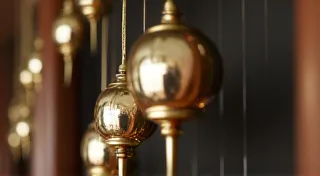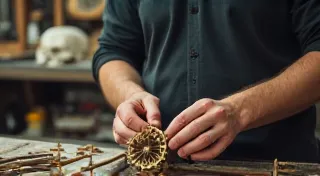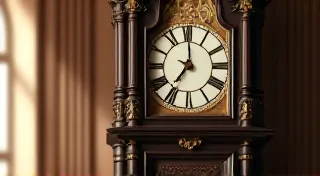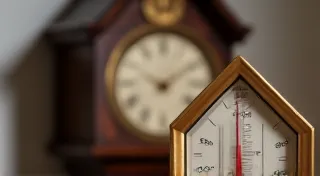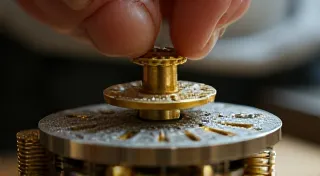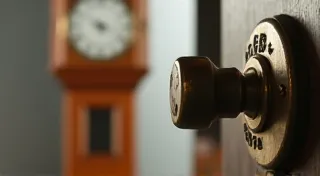Identifying and Matching Antique Clock Dial Faces
The clock dial is often the most visible and distinctive feature of an antique clock. Identifying its type, material, and potential markings is crucial for accurate clock repair, restoration, and even determining its value. Finding a matching replacement dial can be a significant challenge, but understanding the nuances of dial construction can greatly improve your chances of success. The beauty and elegance of these dials are often linked to the care and preservation of the entire clock, including its case, and understanding how to properly cleaning & polishing antique clock cases is key to maintaining its overall condition.
Types of Antique Clock Dials
Antique clocks boast a remarkable variety of dial types, each reflecting the design trends of its era. Here's a breakdown of common examples:
- Enamel Dials: These are arguably the most prevalent type. They’re typically made of porcelain coated with vitreous enamel. They offer excellent detail and clarity, but can be fragile and prone to cracking.
- Paper Dials: Found on many 19th-century clocks, these are printed on paper adhered to a cardboard or metal backing. They're the most vulnerable to moisture and age.
- Painted Metal Dials: Often found on American clocks, these dials are directly painted onto a metal surface. They can range from simple designs to more elaborate, hand-painted scenes.
- Brass Dials: Less common but highly prized, these dials are often intricately engraved and offer a luxurious aesthetic.
- Wood Dials: Primarily found on German Black Forest clocks and grandfather clocks, these dials are often intricately carved or inlaid.





Identifying Markings and Makers
Dial markings provide invaluable clues to a clock's history. Look for:
- Maker's Mark: The manufacturer's name or logo is often stamped or printed on the dial, usually near the 6 o’clock position.
- Patent Dates: Patent information can help pinpoint the clock's production year.
- Style Markings: Certain design elements or phrases used on the dial may indicate the clock's origin or period.
- Roman Numerals vs. Arabic Numerals: The style of numerals used is a common indicator of age. Roman numerals were more prevalent in earlier clocks. Understanding the evolution of clock mechanisms often parallels changes in the design of the dial itself. The history and evolution of antique American clock movements provide valuable context when examining older dials.
Careful examination with a magnifying glass is essential for identifying faint or obscured markings. The condition of the clock’s movement significantly influences its value, so any issues beyond the dial should be assessed as well. It’s also worth noting that the type of metal used in the movement can influence the presence of rust.
Replacing a missing or damaged dial is a complex process. Here's a guide:
- Search Online: Auction sites, antique clock parts vendors, and online forums are good starting points.
- Consult with Experts: Antique clock dealers and restorers can offer valuable advice and potentially source a suitable replacement.
- Consider Reproduction Dials: Reproduction dials can be a viable option if an original is unavailable, but be sure to choose a high-quality reproduction that accurately reflects the original design.
- DIY Restoration (with Caution): If you are experienced, very minor repairs (touch-ups) can be attempted. However, major restoration should be left to professionals.
The quest for a matching dial often requires patience and persistence. Understanding the intricacies of how antique clocks were constructed and the materials used is paramount. If dealing with a clock exhibiting signs of corrosion, knowing how to properly dealing with rust on antique clock movements is essential to ensure the repair process doesn't exacerbate the existing issues.

Restoring a clock dial requires careful consideration. Avoid harsh chemicals or abrasive materials, which can further damage the surface. Cleaning should be gentle, using distilled water and a soft cloth. Refinishing should only be undertaken by experienced restorers, as improper techniques can significantly devalue the clock. Knowing the proper way to replace clock weights is also important for maintaining the clock’s overall functionality and aesthetic appeal.
Preserving as much of the original dial is always preferable. Even significant cracks and imperfections can be part of the clock's history and character. The weight of a clock is more than just a mechanical component; it is also a tangible link to the craftsmanship of a bygone era.
Beyond the dial itself, the overall integrity of the clock’s mechanism is vital. Consider how the placement and functionality of the weights contribute to the clock's performance, and that understanding understanding and replacing clock weights can be an essential step in restoring a timepiece to its former glory.

The challenges of restoring antique clocks can seem daunting, but with the right knowledge and care, these timeless treasures can continue to grace our homes for generations to come. Many early clock designs used simpler mechanisms; some even relied on levers and balances to regulate timekeeping, making the dial an important visual cue for tracking its passage.
Furthermore, remember that the choice of materials used in clock construction, from the enamel on the dial to the brass in the movement, all contribute to its overall value and historical significance. The intricate details of the movement's design often reflect the advancements in technology and the evolving aesthetic preferences of the era. The careful restoration of these elements requires a deep understanding of the clock's original construction and a commitment to preserving its authenticity.
The beauty of antique clocks lies not only in their functional elegance but also in their ability to connect us to the past. Each tick and tock is a reminder of the skilled artisans who crafted them, and the stories they hold within their delicate mechanisms. By embracing the challenges of restoration, we can ensure that these treasures continue to inspire and enchant for years to come. And if your antique clock's weights are in need of replacement, be sure to research the correct type and size to maintain its original design and functionality.
Ultimately, the restoration of an antique clock dial is more than just a technical exercise; it's a labor of love that requires patience, expertise, and a deep appreciation for the artistry of the past.
